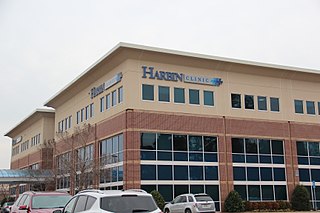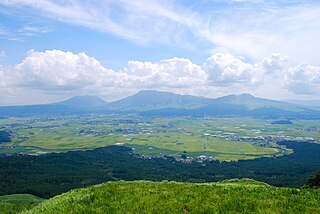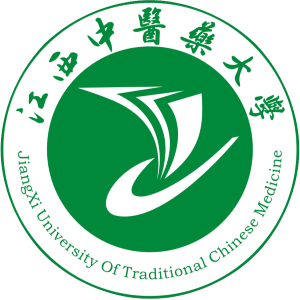Related Research Articles

Pediatrics is the branch of medicine that involves the medical care of infants, children, adolescents, and young adults. In the United Kingdom, paediatrics covers many of their youth until the age of 18. The American Academy of Pediatrics recommends people seek pediatric care through the age of 21, but some pediatric subspecialists continue to care for adults up to 25. Worldwide age limits of pediatrics have been trending upward year after year. A medical doctor who specializes in this area is known as a pediatrician, or paediatrician. The word pediatrics and its cognates mean "healer of children," derived from the two Greek words: παῖς and ἰατρός. Pediatricians work in clinics, research centers, universities, general hospitals and children's hospitals, including those who practice pediatric subspecialties.

Acupressure is an alternative medicine technique often used in conjunction with acupuncture or reflexology. It is based on the concept of life energy, which flows through "meridians" in the body. In treatment, physical pressure is applied to acupuncture points, or ashi trigger points, with the aim of clearing blockages in these meridians. Pressure may be applied by hand, by elbow, or with various devices.
Rajiv Gandhi Medical College and Chhatrapati Shivaji Maharaj Hospital is a school of medicine, established in 1992 and based in Thane, in Kalwa, Mumbai, India.

Medical education in the United States includes educational activities involved in the education and training of physicians in the country, with the overall process going from entry-level training efforts through to the continuing education of qualified specialists in the context of American colleges and universities.
A medical intern is a physician in training who has completed medical school and has a medical degree but does not yet have a license to practice medicine unsupervised. Medical education generally ends with a period of practical training similar to internship, but the way the overall program of academic and practical medical training is structured differs depending upon the country, as does the terminology used.

Tabriz University of Medical Sciences (TUOMS) is public medical sciences university located in Tabriz, East Azarbaijan Province, Iran. It is ranked as one of Iran's top medical school, with more than 5000 students.

Sarojini Naidu Medical College (SNMC), is one of the oldest medical schools of India. It is located in Agra, Uttar Pradesh state. It is named after the first lady Governess of Uttar Pradesh, poet and freedom fighter, Bharat Kokila Smt. Sarojini Naidu. The college has the hospital attached to it named Sarojini Naidu Hospital.
A fellowship is the period of medical training, in the United States and Canada, that a physician, dentist, or veterinarian may undertake after completing a specialty training program (residency). During this time, the physician is known as a fellow. Fellows are capable of acting as an attending physician or a consultant physician in the specialist field in which they were trained, such as internal medicine or pediatrics. After completing a fellowship in the relevant sub-specialty, the physician is permitted to practice without direct supervision by other physicians in that sub-specialty, such as cardiology or oncology.
The American Academy of Acupuncture and Oriental Medicine (AAAOM) was established in 1997 in response to the encouragement of staff and faculty at the Shandong University of Traditional Chinese Medicine in Jinan, China. Classes began in 1999 in a small collection of rooms in the University Technology Center building in Dinkytown, near the University of Minnesota, United States. At that time there were about 40 full and part-time students and the school consisted of two class rooms, four treatment rooms and a small series of adjoining offices which served as reception, administration office and pharmacy. The one clinic consultation room was little more than a closet with a window and enough space for a desk and two chairs.

The Harbin Clinic is a privately owned multi-specialty medical clinic in Rome, Georgia.
Master of Medicine (MMed) is a postgraduate professional clinical degree awarded by medical schools to physicians following a period of instruction, supervised clinical rotations, and examination. The degree usually takes three years to complete, but may take up to four years in some countries. It is awarded by both surgical and medical subspecialties and usually includes a dissertation component. The degree may complement an existing fellowship in the chosen specialty or be the sole qualification necessary for registration as a specialist.
As of 2021, 11 universities in Uganda offer medical schools. Admission to medical school requires the candidate to have attained a Uganda Advanced Certificate of Education (UACE) as well as proficiency in Biology or Zoology, Chemistry and Physics at A-level standards. Training leading to the degree of Bachelor of Medicine and Bachelor of Surgery (MBChB) lasts five years. Major examinations are conducted after the first, second and fifth year, with additional evaluations after each clinical rotation. After successful completion of the fifth year, candidates complete a year of internship under the supervision of specialists. Postgraduate training is available at Makerere University School of Medicine in a number of medical and surgical disciplines. The training takes three years and leads to the Master of Medicine (MMed) degree.
Doctors Hospital and Medical Center is a 250-bedded private hospital located in Lahore, Punjab, Pakistan. It is attached to Lahore Medical and Dental College as a teaching hospital.
Jishūkan was the Han school of Kumamoto, Japan existing between 1755 and 1870. It was established by Hosokawa Shigekata, the 6th Hosokawa clan daimyō of Higo Province, Kumamoto, Kumamoto, inside Kumamoto Castle and this school is known for producing many noted scholars such as Yokoi Shounan, Inoue Kowashi and Kitasato Shibasaburo.

Hosokawa Shigekata was a Japanese samurai daimyō of the Edo period.

The University of Health Sciences is a public university offering degrees in health sciences in Phnom Penh, Cambodia.

The history of Kumamoto Prefecture has been documented from paleolithic times to the present. Kumamoto Prefecture is the eastern half of Hinokuni, and corresponds to what was once called Higo Province. Exceptions are the parts of Kuma District, which had once been part of Sagara Domain, and Nagashima which was included in Kagoshima Prefecture.

Jiangxi University of Traditional Chinese Medicine, designated as a medical university in Nanchang, Jiangxi, is an institution of higher learning under the leadership of Jiangxi provincial government. According to the survey by CUCAS, Jiangxi is ranked 43rd in Chinese medical universities, 577th University in China by 4icu ranking.

N. S. Memorial Institute of Medical Sciences (NSMIMS) is a co-operative hospital located at Palathara in Kollam, India. It was founded in 2000 in memory of N. Sreedharan, a communist organizer who was a member of the secretariat of the Communist Party of India (Marxist). This is the first Co-operative Multi Super Specialty Hospital in South Kerala. The hospital has 32 specialty departments and 95 doctors including 25 post graduate doctors and more than 950 medical and paramedical staff. It has a full range of services.

Phramongkutklao College of Medicine is the first and only medical cadet school in Thailand. The college is the seventh medical school established in Thailand. Phramongkutklao College of Medicine is an affiliated college of Mahidol University. This school only accepts students whose parents both are natural-born-citizens.
References
- Higo Iiku Shi or history of medical education in Kumamoto, by Masatada Yamasaki. 1929 Chinzei Ikai Jihousha, Kumamoto .It has 746 pages plus 132 pages of supplement. It was reprinted in 2006 in its original form.
- 100 years of the department of ophthalmology of Kumamoto University Tanihara H, Okamura R. Department of ophthalmology, Kumamoto University, 2005. Maps and photographs of institutions were shown.
- Anecdotes of Hosokawa Shigekata Kawaguchi K. Kumamoto Nichi-Nichi Shimbun, 2008. ISBN 978-4-87755-313-5